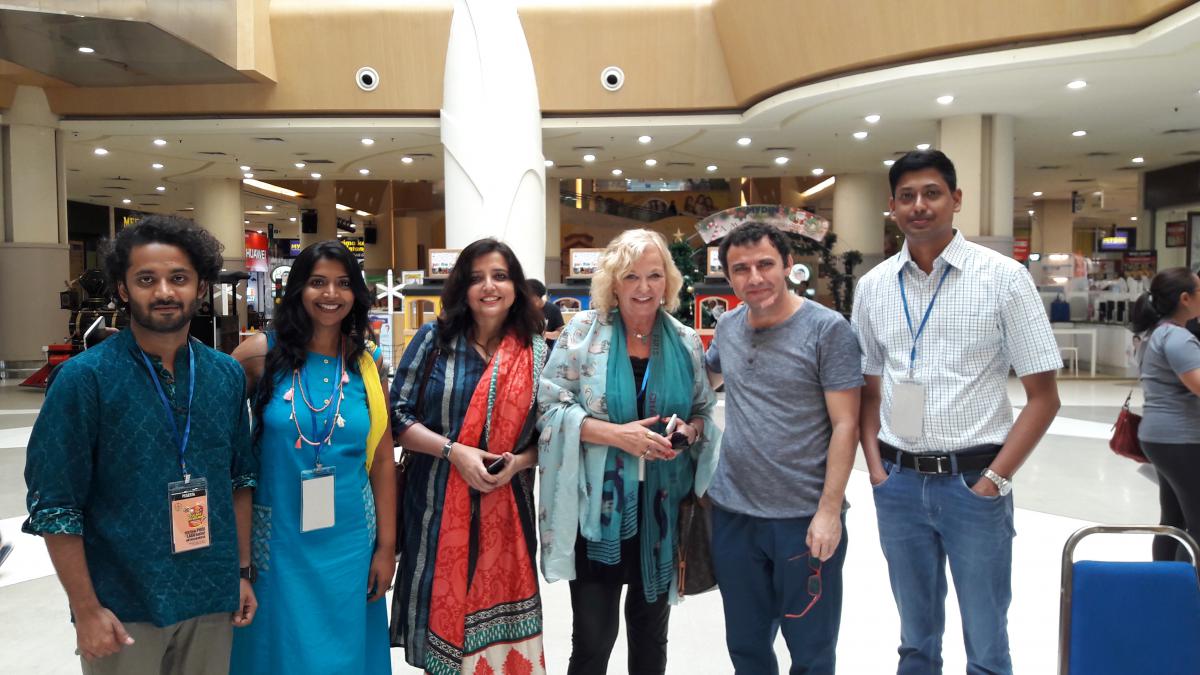
THE 9TH EDITION OF THE INTERNATIONAL FESTIVAL PULARA, IPOH, MALAYSIA
Aziz Nazmi Shakir
My journey from Istanbul to Ipoh, a city in north-western Malaysia, known as a gateway to the Cameron Highlands hill station took me a couple of round the clock circles. Luckily Tom, one of the international volunteers coming from Nottingham, who helped the organizers of the festival, sacrificed half of his day to wait for me patiently at the Kuala Lumpur International Airport, otherwise I would have spent another half a day to find the right spot for the buses leaving for Ipoh. In the middle of the 1900s, Ipoh was the world’s largest producer of tin. Nowadays it is the capital city of the state of Perak. Located by the Kinta River, it is nearly 180 km north of Kuala Lumpur. A century ago this region witnessed a tin-rush, but now it was a local festival that poets, troubadours and academicians from different time zones of the world were rushing to. A look at the vibrant poster of the 6-days-long event welcoming the participants at the entrance of the spectacular Casuarina Meru hotel, showed a totally different geography, which was not subjected to any physical or political logic: the flags of 26 countries from five continents formed a unique map on which Turkey, for instance, neighbored Morocco and South Korea, the United States were hand in hand with China etc. I guess this was a symbolic revenge few people of arts were taking from the everyday news world, in exchange for the habitat they were forced to dwell in daily.
From the moment I entered the hotel lobby, time rules drastically changed and forming a coalition with my jetlag lead to a total insomnia during the whole festival. The events used to start right after breakfast and usually ended around midnight. The dawn of day one brought us to Gua Tempurung: a cave believed to have existed since 8,000 B.C. It comprises of five huge domes with ceilings resembling coconut shells. Gua is famous for its breathtaking galleries of stalagmites, stalactites and other amazing rock formations that are superb speleological wonders found only in this part of the world. As we entered through the walkway on stilts over the cave river, we saw layers of white marble stone slabs and walls with different shades. Walking deeper to the dimmed showcase gallery, we were struck by the beauty of the so-called Golden Flowstone. Standing at a height of 90 meters, it described the sloping and wavering floor and wall of the cave which had a golden hue when water flowed over it. When we climbed the 640 steps to platform 5, we were standing at a height of 1200 meters. This physical challenge accompanied by a high dose of humidity and hot weather threw even those of the participants coming from Sahara Desert into a thrilling panic attack. Then as a kind of compensation for our determination came the Gergasi (“Giant”) cavern holding a huge column that looked like a rocket. Next was the Tin Mine Cavern where we had a peek into tin mining activities that took place in the old days. At the end of the journey, our group was rewarded with a rainbow of colors from sunshine reflected off the cave walls. This fast start planned as an adrenalin injection and source of inspiration for the rest of the program was followed by a poetry reading in Malim Artists’ Village, situated just few miles away from Gua Tempurung. And once again the world proved to be smaller than expected: it turned out that the village was founded a couple of years ago by Malim Ghozali Pk, a prominent Malaysian writer and scholar I had met back in 2007 in the United States, where we were attendees of the 40th edition of the International Writing Program held in Iowa (https://iwp.uiowa.edu/). Since 1967, over fifteen hundred writers from more than 150 countries have been in residence at the University of Iowa. Luckily I and Malim were destined to meet there, and a dozen years later again on the other end of the map. The scene constructed in the center of the Artists’ Village witnessed a couple of torrential downpours: One brought by the tropical northeast monsoon blowing here between November and March, and another, consisting of poetry and music trying to suppress the orchestra of the first. When the rain had lost half of its weight, its sounds stopped competing with our poems and songs, and turned into an accompaniment to form an acoustic duo with the latter. Waiting for my turn to come upon the request of my colleagues from India I handed them the folder with my poems. From this moment onwards we became brothers and sisters in poetical arms with Amanita Sen, Shashank Johri and Mohammed Zahid. When the microphone announced my name I decided to take advantage of the weather and I started my reading with the following ex-prompt:
***
1
Clouds
Were the innocent victims
Of our prayers for rain.
2
Since we stopped praying
Clouds
Are forced to commit suicide.
It was followed by:
A MAN NOT FOR A MAN
To Mahmud Darwish
We prescribed unto the children of Israel that who kills a man, not for a man, or for corruption in the earth, it is as if he has killed all people, and who saves a man it is as if he has saved all people… (Holy Quran 5:32)
For years on end
To keep my mum from crying
I pretend I am alive...
And every time they kill me,
I am saying that:
“It is because of my corruption”
So that
I wouldn’t feel a guilt:
According to the Scripture, if I’m innocent,
I’ll put to death the killer and his billions of victims ...
To avoid the killer’s look, I’m falling on my face…
And then he says, “I’m killing you to save a man”.
Behind my back he points at himself and then he smiles
As if he just has saved not himself, but all people.
He is right: at least he’s not pretending that he kills.
And only then I realize,
That all these years
He’s been killing
Not me, but himself only;
That I’m dying
Each time they killed a man not for a man
And I have hurried shooting myself in the head
With a bullet made of silence
Hoping that the cries for help
Will flow out from the hole in the temple…
For years on end
To keep my mum from crying
I pretended that I am alive,
But now I understood:
To keep her son from crying
She
Like me
Pretends she is alive…
She waits for me to stop pretending that I’m dying…
***
One of the main organizers of the festival, the poetess Mawar Marzuki, read my poems’ translations into Malay language (Bahasa Melayu). The written Malay language is usually using the Latin alphabet called Rumi, but interestingly an Arabic script called Jawi is also in use. Rumi is official while efforts are currently being undertaken to preserve and revive the older Jawi script. The Malay language has most of its borrowings absorbed from Sanskrit, Tamil, Hindi, Persian, Portuguese, Dutch, Sinitic languages, Arabic and more recently, English.
The next scenes for our performances were also carefully selected. After Ipoh’s Mydin city mall where our texts successfully distracted hundreds of customers’ attention and prevented them from wasting money for pointless souvenirs, it was one of the top ten Malaysian waterfalls’ turn. This multi-tiered waterfall situated in Lata Kinjang cascades for 100 m down a mountain side and is one of the highest waterfalls in South East Asia, as the whole fall is said to total 850 m in height. On our way back, inside the bus we organized a “waterfall poem writing session” and incorporated this grandiose natural phenomenon into miniature word-waterfalls. My personal outcome of the latter was as follows:
The water falls
And no one asks
If it is fond of hurrying
Down the hill
It maybe suffers vertigo
And yet
The water keeps caressing
The roughest rock
The way your hand
Is falling down my spine
Our next stop was Asia’s first animation theme park: the Movie Animation Park Studios located in the vicinity of our hotel in Ipoh. The park features Malaysian animated characters like BoBoiBoy as well as international characters such as Casper the Friendly Ghost, the Croods, Megamind, the Smurfs and Mr. Peabody & Sherman. Finding themselves “trapped” in the six adventure zones of the park, most of the festival’s participants forgot their academic titles and pretended to be kids. This came as no surprise since what we all found here was something we could not experience back in our childhoods.
Maybe less exciting, but more important was attending a spectacular show organized in the royal town of Perak: Kuala Kangsar. Perak is a constitutional monarchy, with a constitutional hereditary ruler. The current, 35th Sultan of Perak is Nazrin Muizzuddin Shah (appointed on 29 May 2014. His full name and official title in English is really impressive: His Royal Highness Paduka Seri Sultan Nazrin Muizzuddin Shah Ibni Almarhum Sultan Azlan Muhibbuddin Shah Al-Maghfurlah, the Sultan, Sovereign Ruler and Head of the Government of Perak Abode of Grace and its Dependencies, D.K., D.K.S.A., D.K.A.,D.M.N., D.K. (Selangor), D.K. (Kelantan), S.P.C.M, S.P.T.S, S.P.M.P. (Perlis), Ph.D (Harvard), MPA (Harvard). Kangsar is located at the downstream of Kangsar River where it joins the Perak River, approximately 25 km northwest of Ipoh. The name Kuala Kangsar is believed to be derived from “Kuala Kurang-Sa”, which literally means “100 minus one”, usually interpreted as “the 99th small tributary to flow into the Perak River”. Тhe current Royal Palace in front of which all participants took pictures is named Istana Iskandariah. With its Art-Deco architecture, the palace is a rare but significant piece of architectural milestone in Malaysia. The town is also the site of the first rubber tree planted in the country by the English botanist Henry Nicholas Ridley. He was the person who helped Malaysia become the largest rubber producer in the world. Miraculously the tree still stands today, but since in my capacity teacher, I consider rubber a dangerous weapon used by students, on our way back I did not dedicate anything to it.
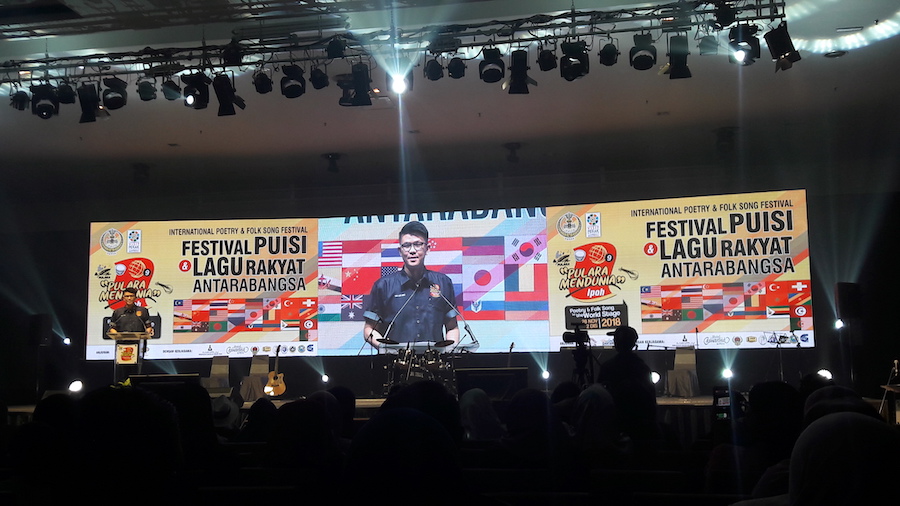
The five hours long gala night at “Amanjaya Convention Hall” broadcasted by the national TV channel was preceded by a scientific seminar where the academic shades of the participants changed the poetical and musical atmosphere into a scientific one. My participation incorporated a couple of interrelated topics: initially I presented some general aspects of my 18 years long teaching experience at Sabanci University and then I switched to the usage of classical and modern Arabic poetry for didactic purposes. One of the facts which astonished the audience was related to the fact that for nearly seven centuries throughout the so called Arabic world the second most popular book after the Holy Qur’an was a rhymed book of Arabic grammar called Alfiyya. This work written by Ibn Malik in the 13th century was one of two major foundations of a beginner’s education in Arab societies until the 20th century, when religious educational systems began to be replaced by colonial ones (such as the French schools in Morocco). Along with the Ājurrūmiyya, the Alfiyya was one of the first books to be memorized by students in religious schools after the Qur'an. The Ājurrūmiyya is also a 13th-century book of Arabic grammar, written in verse for easy memorization, it formed the foundation of a beginner's education in Classical Arabic learning in Arab societies. It was written by the Moroccan Berber Ibn Da'ud as-Sanhaji (d. 1324). The "Âjurrūmiyya" is a well-known and useful compendium of Arabic Syntax, regarded by the Arabs themselves as a standard educational work. As a matter of fact, I have a number of Syrian colleagues who still remember parts of the “Alfiyya” that they have memorized as children. In cases when the latter are not sure about certain rules, to check what was Ibn Malik’s oppinion they try to recall and recite the verses concerning the mentioned rules. Actually once upon a time all sciences were thought in terms of poetry and told in verse. We lost this virtue and understandably now our lives are ruled by prose and prosaic laws. The seminar was attended by valuable researchers such as Dr. Raja Rajeswari Seetha Raman, Dr Arbak Othman, Padmaja Iyengar-Paddy, Mawar Marzuki, Maja Herman Sekulic etc. who contributed with interesting papers and book reviews.
The gala night attended by the minister of the state (the highest position in the local governmental hierarchy) was organized as a spectacular show trying to incorporate the best performances of the 9th edition of the festival. Once again (with a waving Turkish flag on the video wall behind me) I had the privilege to address a vast audience, which this time consisted not only of the colorful crowd cheering in the hall, but also of an unknown number of TV spectators. Interestingly whenever Turkey was mentioned I felt a special attention dictated by a totally positive attitude. Not surprisingly one of the Malay tourists’ top destination is Anatolia, and after my return to Istanbul I start seeing pictures from all over Turkey shared in the Facebook profiles of my new acquaintances from Ipoh and Kuala Lumpur. Such events as Pulara, act as time-bombs, which “explode” as many times as the participants “detonate” it. As a result of analogous detonation in April 2019 my friend Malim Ghozali Pk visited Turkey and alongside all sightseeing he met local authors and started a project for publicizing Malay literature in the Middle East. This text is also an example of a peaceful explosion detonated by my short stay in Ipoh, Malaysia, aimed at giving you, my colleagues at the School of Languages a glimpse of this Asian state and few pieces of my soul in verse.
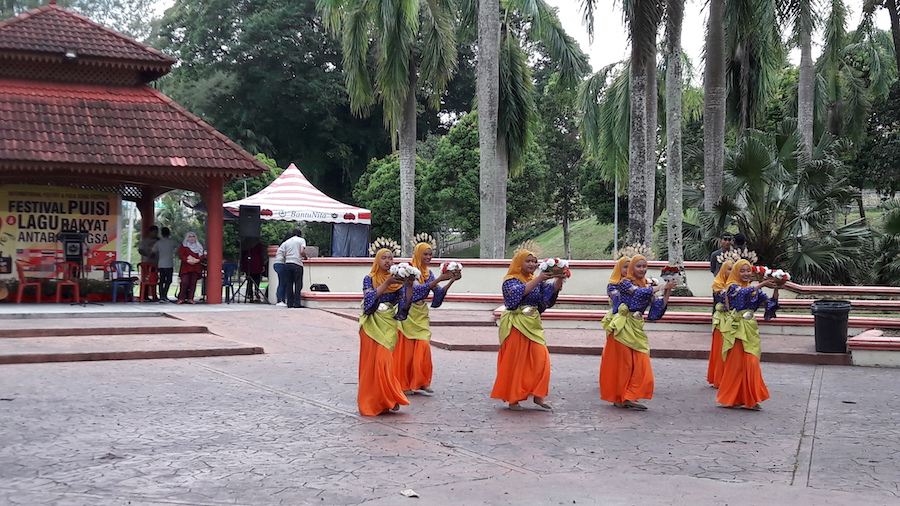
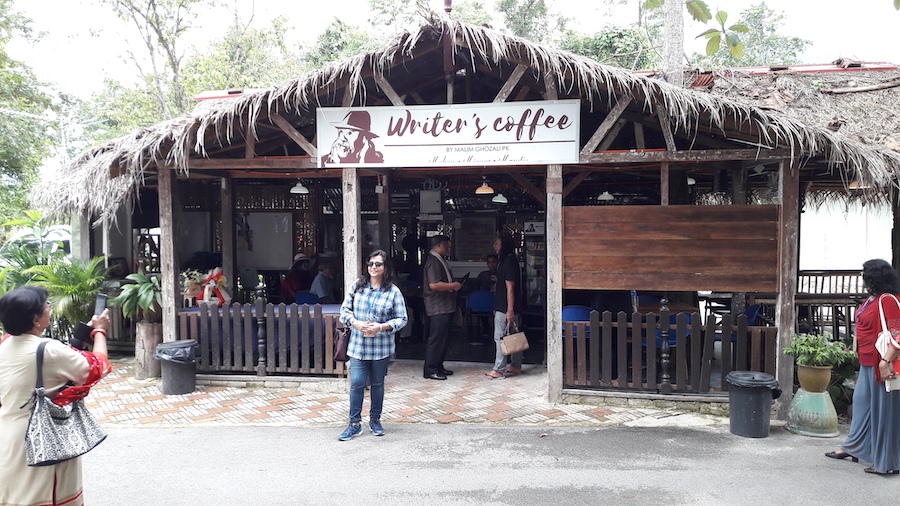
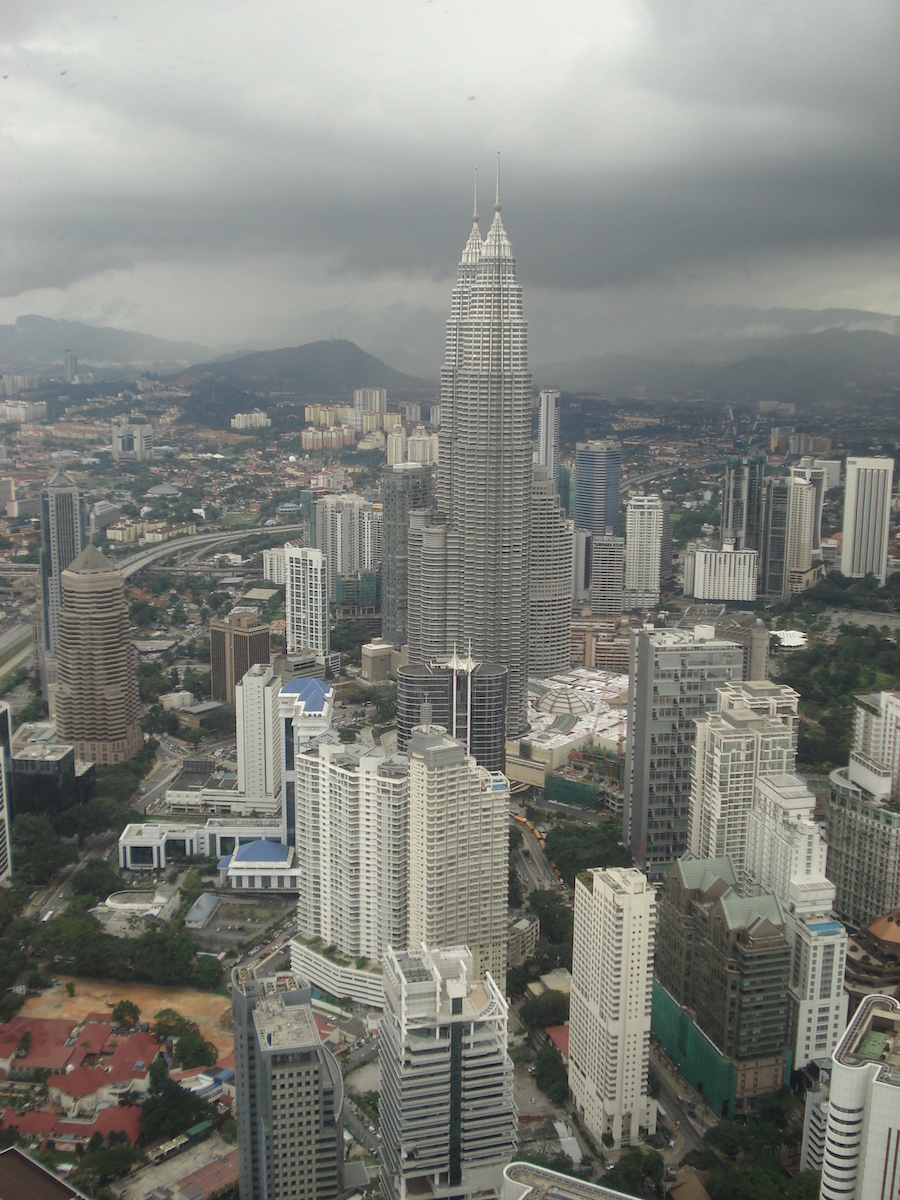
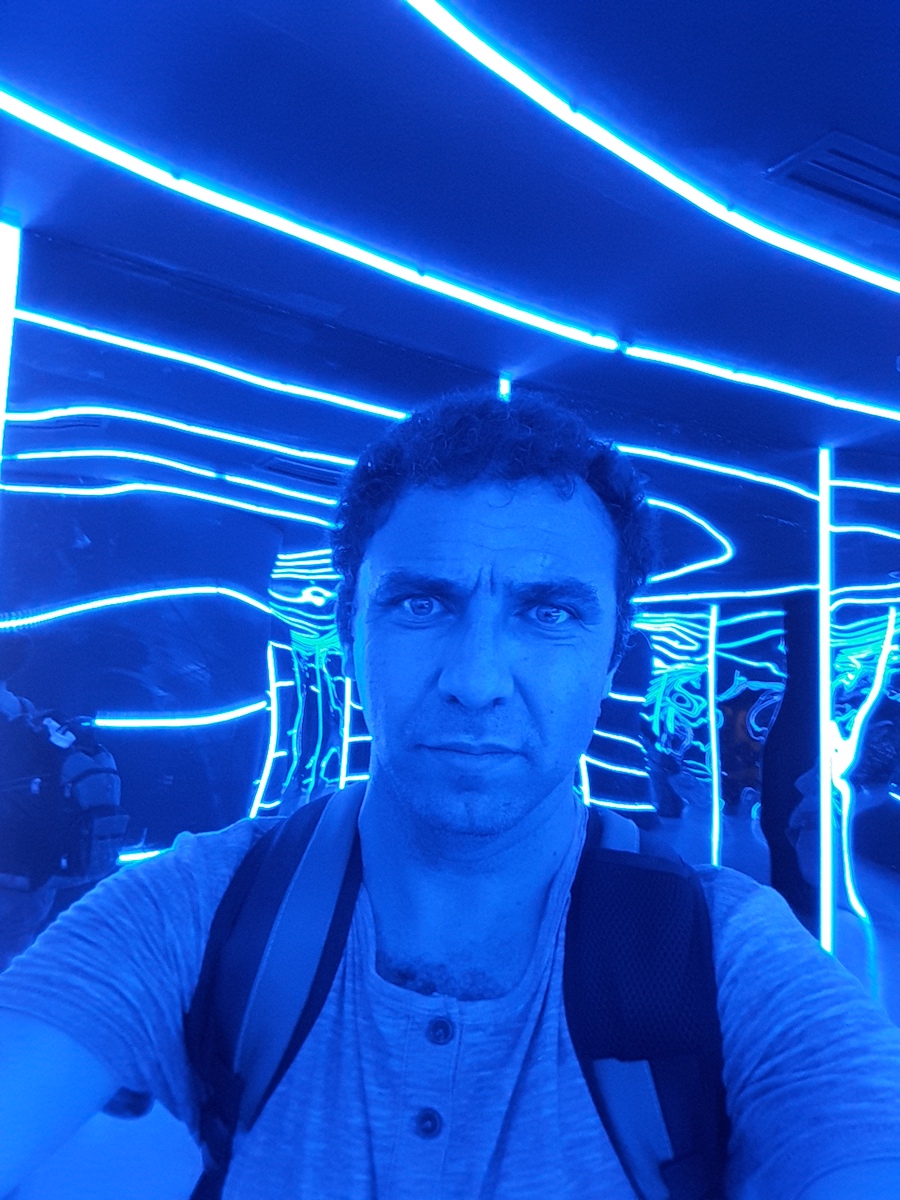
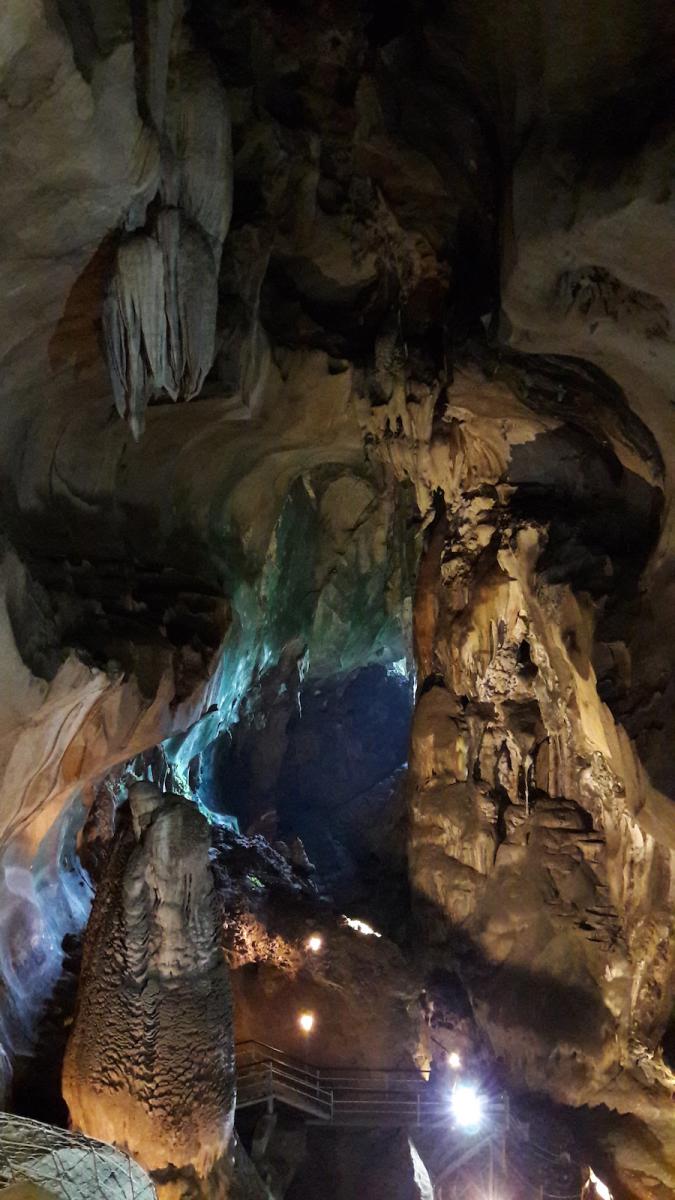
Pictures:
With other poets in the city mall, Gala night scene, Kuala Kangsar, King’s city, Malim Artists Village, Kuala Lumpur as seen from Menara Tower, Blue monster in the MAPs, Gua Tempurung Cave
